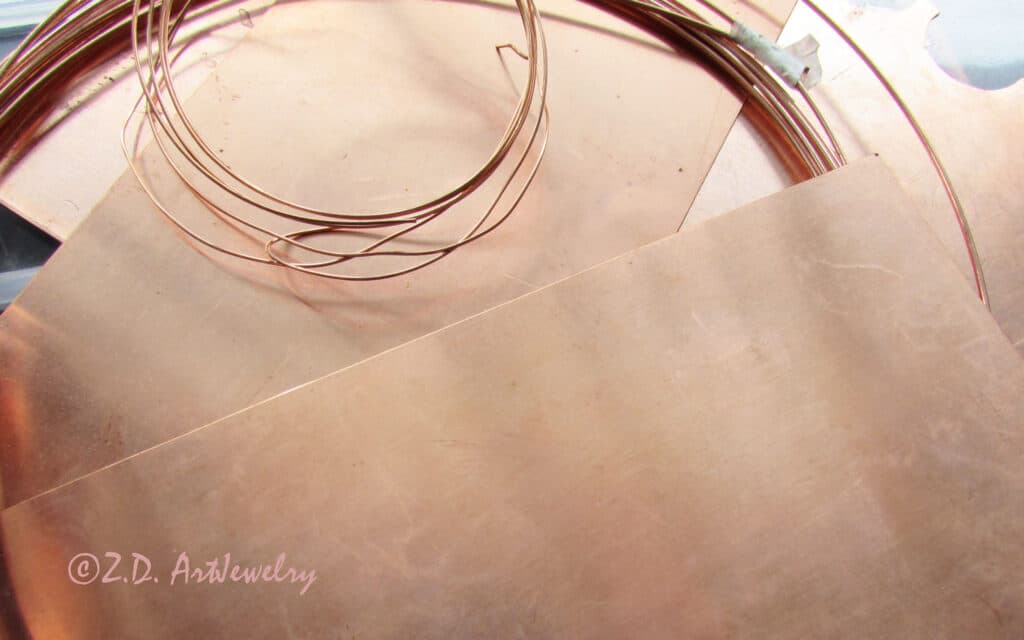

Copper is one of the first metals used by human as it can be found in a usable metallic form in nature. It has a high thermal and electrical conductivity and that is why it has many applications in various industries. Copper, along with silver and gold are in group 11 of the periodic table; with unique chemical structure. These metals have one s-orbital electron on top of a filled d-electron shell and this makes them highly malleable, ductile and electrically and thermally conductive.
Copper atoms bond to other copper atoms via metallic bonding where the atoms are “held” together by a delocalised electron cloud. Due to lack of covalent character in metallic bonds of copper, it is a relatively weak metal. All these properties are very important and make copper a very unique and useful metal in art!
Its unique properties and aesthetic features make it a core and applicable metal in various art forms. Pure copper is orange-red and after tarnishing it will turn to a reddish colour. You can not find this colour in any other metal or alloy. In the art-jewelry realm, jewellers use this colour a lot and particularly in combination with other metal colours such as silver colour and brass yellow colour. The tarnish that forms on the surface of copper pretty fast is actually protecting the underlying metal from deterioration.
In addition to its natural colour, it has a great potential for patination. Patination occurs when oxygen molecules react with Cu atoms in presence of water that can create a range of colours from red to black. If CO2 reacts with copper, copper might turn to a range of colours from blue shades to green shades. Patination can potentially occur in all copper alloys. Therefore, in addition to improving the hardness of soft metals such as soft silver , adding copper to them increases their potential to be patinated.
In addition to using copper colour richness, we exploit copper malleability in arts such as chasing and repousse, engraving and forming. Due to its malleability, you can form and work it easily between annealings. And after work hardening it, you can anneal and work with it again. I am using chasing and repousse techniques in my works. In repousse, we are creating low reliefs by hammering the metal from reverse side using a repousse tool. Copper is almost the most ideal metal for this process due to its unique characteristics and also cheap price!
On the other hand, we are using copper as the base metal for enamelling. It is a great metal for this purpose due to its high melting temperature (1085 degrees Celsius). And its malleability allows us to form and shape it the way we want and then enamel it.
Also, bronze is one of main alloys of copper (copper+tin). It is a frequently-used alloy and ancient method being used in making sculptures using casting. The reason is that it is providing both details and consistency in casting sculptures.
There are certainly other forms of arts having copper as their main player as well.
So now, you know why lots of artists and hobbyists really like copper!
The links I used to write this post
We use cookies to improve your experience on our site. By using our site, you consent to cookies.
Manage your cookie preferences below:
Essential cookies enable basic functions and are necessary for the proper function of the website.
These cookies are needed for adding comments on this website.
Stripe is a payment processing platform that enables businesses to accept online payments securely and efficiently.
Service URL: stripe.com (opens in a new window)
Statistics cookies collect information anonymously. This information helps us understand how visitors use our website.
Google Analytics is a powerful tool that tracks and analyzes website traffic for informed marketing decisions.
Service URL: policies.google.com (opens in a new window)
You can find more information in our Privacy Policy.